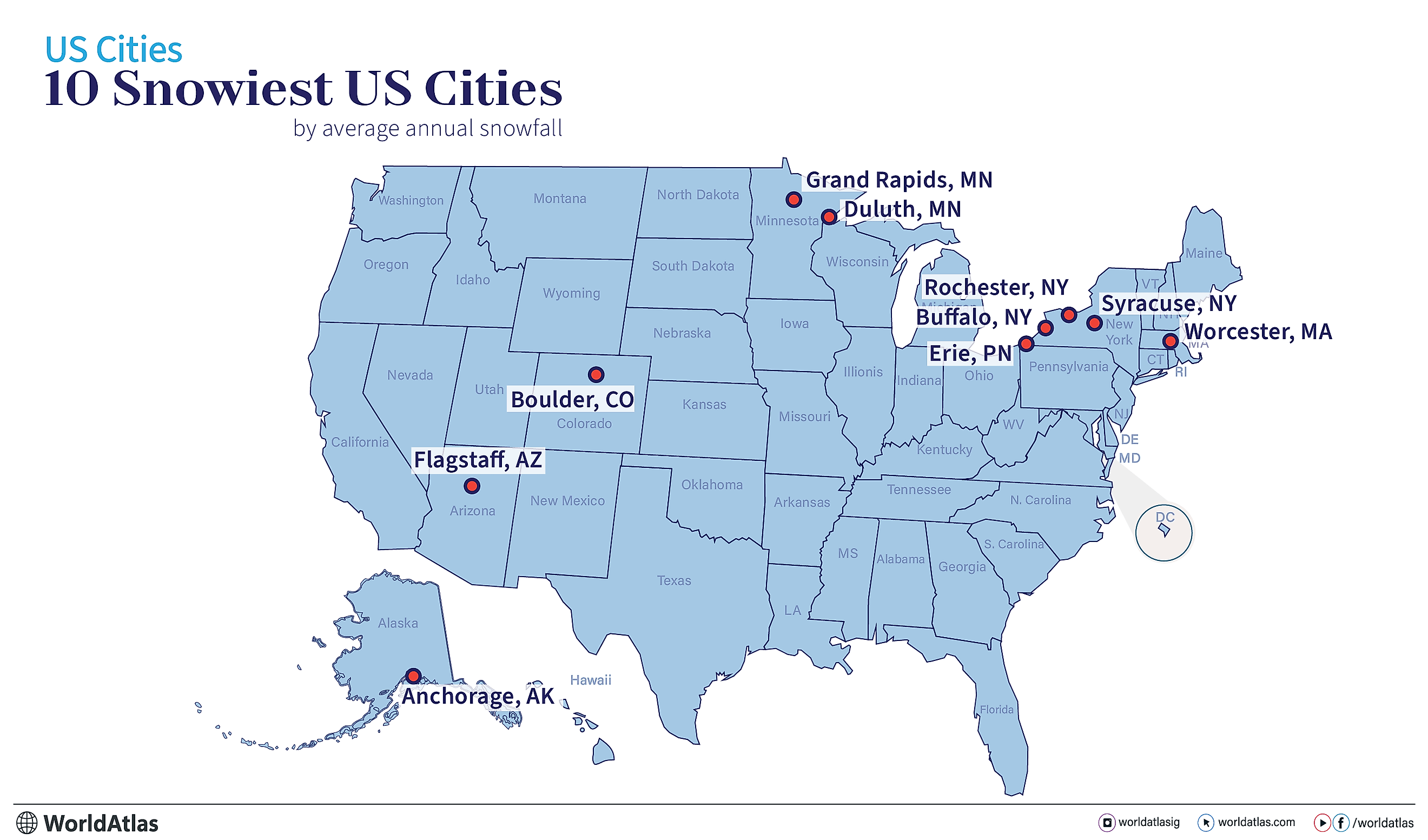
10 Snowiest Cities in the US
Whether you enjoy the white stuff or not, snowfall is a fact of life for millions of Americans. Yet while all 50 US states receive at least a little snow now and then, including northern Florida (though rare) and the mountains of Hawaii, there are some places in the country that are guaranteed substantial amounts of snow each year. And by “substantial,” we’re talking a lot.
Several cities in the United States, in fact, are pretty much guaranteed significant annual snowfall due to their geographic locations, their elevation, and local weather patterns. From the lake-effect snow of the Great Lakes to the mountainous terrain of the West, these areas are prone to persistent winter storms that lead to impressive snow totals. Read on to find out more about the snowiest cities in the US.
1. Syracuse, New York - 127.8 Inches of Snowfall/Year

Located in central New York state, Syracuse holds the distinction of being the snowiest city in the United States with an average annual snowfall of 127.8 inches. This impressive snow total can be attributed primarily to a phenomenon known as "lake-effect snow," which occurs when cold air moves over the relatively warmer waters of Lake Ontario. This interaction causes the air to pick up moisture, which is then released as snow once it reaches the cooler landmass.
Syracuse's geographic location places it directly in the path of prevailing winds that draw moisture off the lake, making the area particularly prone to heavy snowfall in the winter months.
2. Erie, Pennsylvania - 104.3 Inches of Snowfall/Year
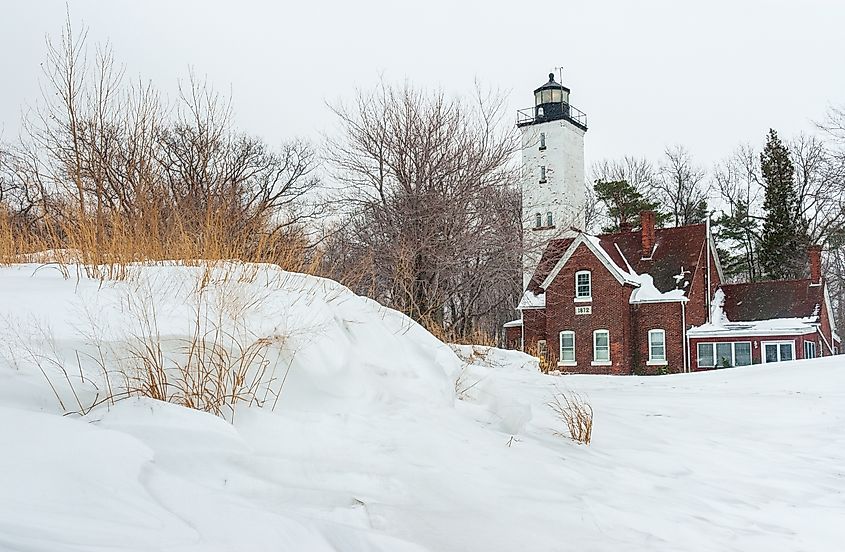
The Presque Isle Lighthouse During Winter at Presque Isle State Park, Erie, Pennsylvania
Erie, Pennsylvania, experiences an average of 104.3 inches of snow annually. Like Syracuse, Erie’s high snowfall can be attributed to lake-effect snow. Situated on the shores of Lake Erie, this city is prone to heavy snowfalls during the colder months, especially when the lake remains unfrozen, allowing it to continue releasing moisture into the atmosphere.
Lake-effect snow is particularly intense in Erie due to the relatively shallow depth of Lake Erie compared to other Great Lakes. This allows the lake to heat up quickly in the fall, providing a strong contrast between the colder air masses that flow over the region in winter. As a result, Erie frequently experiences snowstorms that can drop several feet of snow over the course of a single storm.
3. Rochester, New York - 102 Inches of Snowfall/Year
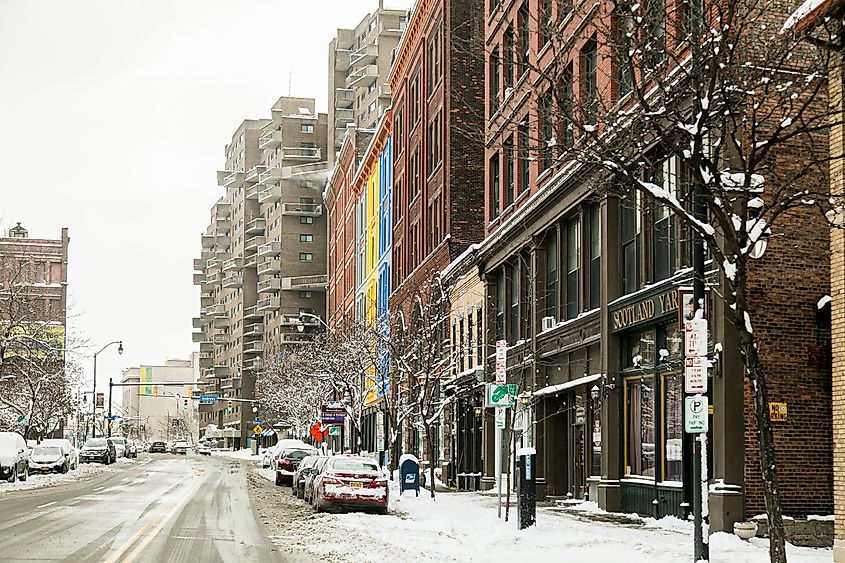
Rochester, located in western New York, sees an average annual snowfall of 102 inches. Much like Syracuse, its neighbor 85 miles to the east, Rochester is heavily influenced by lake-effect snow generated by the nearby shores of Lake Ontario. The city's position to the east of the lake places it in the perfect location for these snowstorms, which can result in significant snowfall in short periods of time.
Rochester experiences a distinct snow belt, a narrow band of heavy snow that stretches across the region due to the combination of lake-effect snow and prevailing westerly winds. These storms can blanket the city with snow for days at a time, contributing to the high snow totals.
4. Buffalo, New York - 95.4 Inches of Snowfall/Year

Buffalo, New York, is another city in the Great Lakes region that sees substantial snowfall. Its average annual total of 95.4 inches is also primarily driven by lake-effect snow, but the city's location on the eastern shores of Lake Erie exposes it to some of the heaviest snowfalls in the region.
Buffalo’s snow is often intense and localized, with some neighborhoods receiving significantly more snow than others due to the way the winds interact with the lake and surrounding topography. The famous “Snowvember” storm of 2014, which dumped over seven feet of snow on parts of the city in just a few days, is a dramatic example of how heavy lake-effect snow can impact the region.
5. Boulder, Colorado - 92.8 Inches of Snowfall/Year
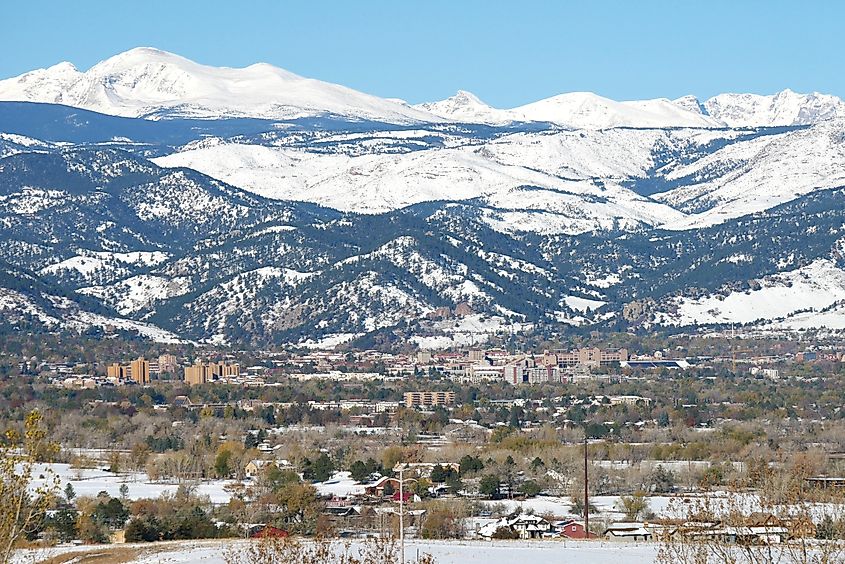
Snow-covered Rocky Mountains and a college town Boulder, Colorado
The city of Boulder, Colorado, experiences an average annual snowfall of 92.8 inches, much of which comes from the combination of mountain weather systems and occasional snowstorms that move in from the west. Although Boulder isn’t directly on the shores of a large body of water like the Great Lakes cities, its location in the foothills of the Rocky Mountains contributes significantly to the city's snow totals.
While the mountains surrounding Boulder play a role in trapping moisture and producing snow, its elevation of over 5,000 feet is also a major factor, contributing to colder temperatures conducive to snow. Winter storms that move across the state can produce significant snowfalls in Boulder, particularly during El Niño years when moisture-laden storms are more likely to hit the area.
6. Duluth, Minnesota - 90.2 Inches of Snowfall/Year
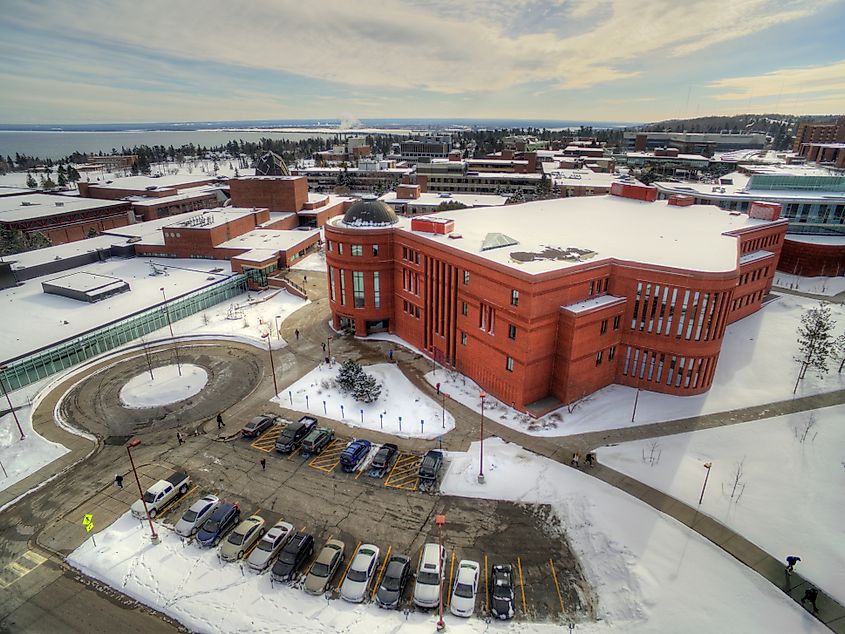
Situated on the shores of Lake Superior in northern Minnesota, Duluth receives an average of 90.2 inches of snow per year. As one of the snowiest cities in the Midwest, Duluth’s heavy snowfall is largely driven by lake-effect snow, although the city's northern latitude also means it experiences long, cold winters.
Lake Superior’s vast size and relatively cold temperatures make it a constant source of moisture that feeds snowstorms moving across the region. Together, the combination of cold air from Canada and the moisture from the lake creates ideal conditions for significant snowfall. In addition to lake-effect snow, Duluth also experiences regular snowstorms that can drop heavy amounts of snow in a short period of time.
7. Flagstaff, Arizona - 90.1 Inches of Snowfall/Year
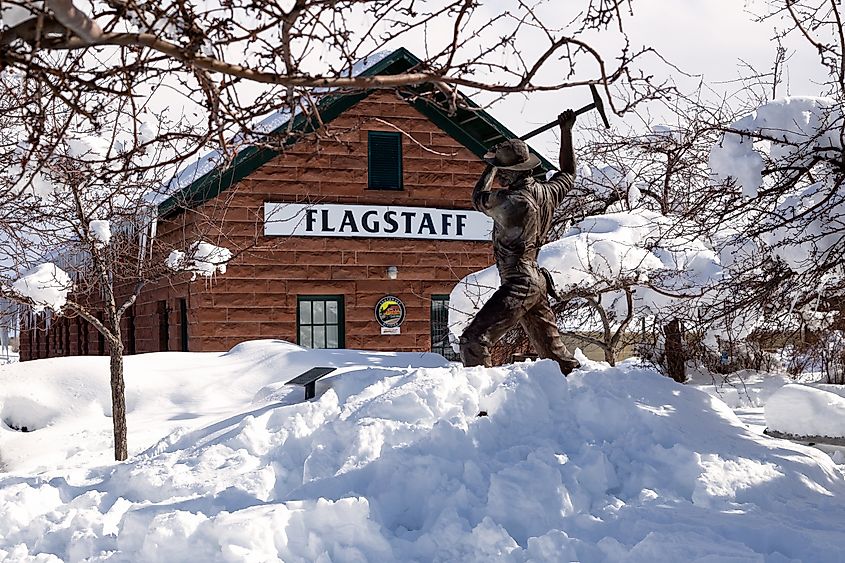
Flagstaff, Arizona, is something of an anomaly on this list due to its location in the southwestern United States. With an average snowfall of 90.1 inches per year, Flagstaff’s snowfall is largely the result of its high elevation and proximity to the San Francisco Peaks.
Situated at an altitude of over 7,000 feet, Flagstaff experiences much colder temperatures than other parts of Arizona, allowing snowstorms to dump significant amounts of snow during the winter months. The city is also located in a region that regularly experiences moisture-laden storms from the Pacific, especially during winter.
8. Anchorage, Alaska - 77.9 Inches of Snowfall/Year
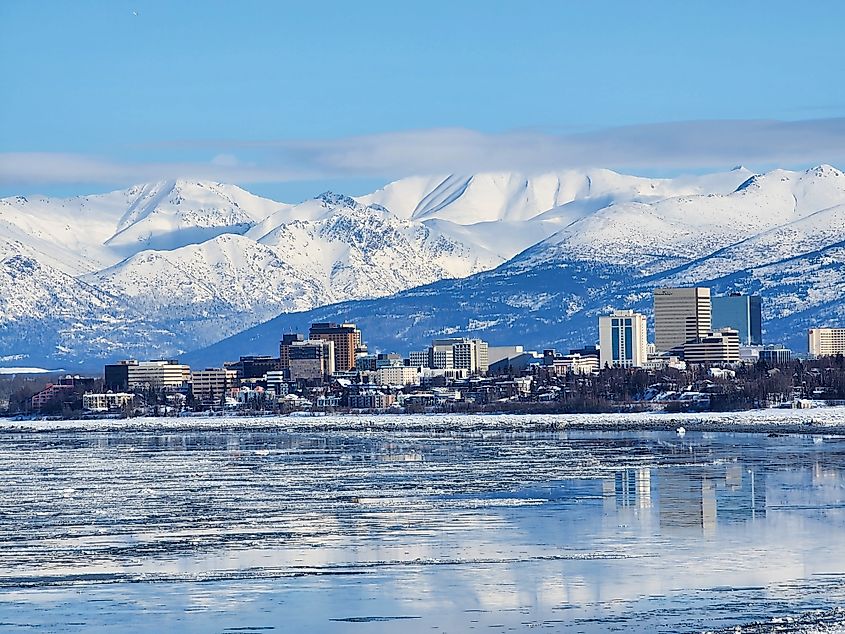
Anchorage, Alaska, receives an average of 77.9 inches of snow annually, a substantial amount for a city located so far north. The snow here is primarily the result of Pacific storms that bring moisture to the area, while its proximity to the Gulf of Alaska means that it’s frequently affected by winter storms that dump snow over the region.
While Anchorage’s snow totals may not be as extreme as those in the Great Lakes region, its subarctic climate and extended winters ensure that snow accumulates steadily and sticks around throughout the season.
9. Grand Rapids, Michigan - 77.6 Inches of Snowfall/Year
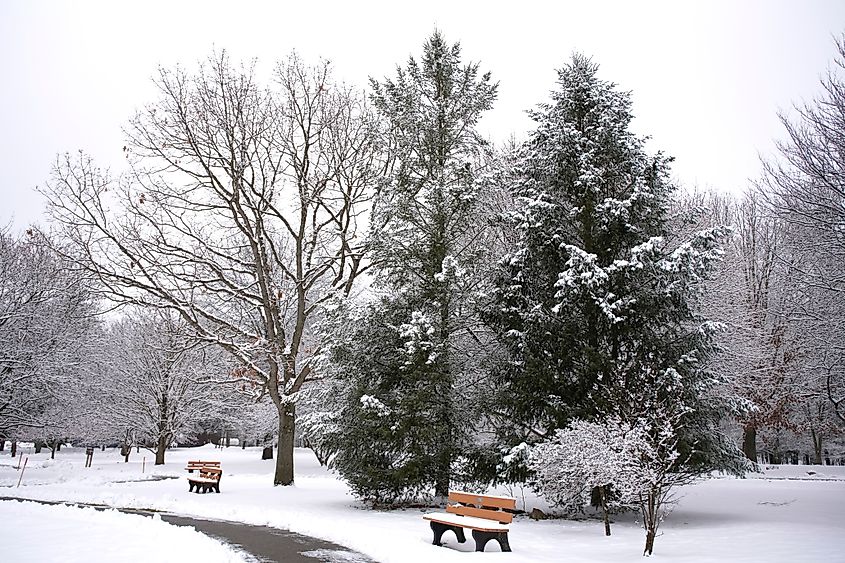
Thanks to its location near the shores of Lake Michigan, Grand Rapids, Michigan, averages 77.6 inches of snow per year. Like other cities in the Great Lakes region, Grand Rapids experiences lake-effect snow, which occurs when cold winds blow over the relatively warmer lake waters.
This phenomenon frequently results in heavy snowfall during the winter months, often accompanied by persistent snowstorms. Grand Rapids' location places it in America’s "snowbelt," a region prone to frequent snowstorms during the winter.
10. Worcester, Massachusetts - 72.9 Inches of Snowfall/Year
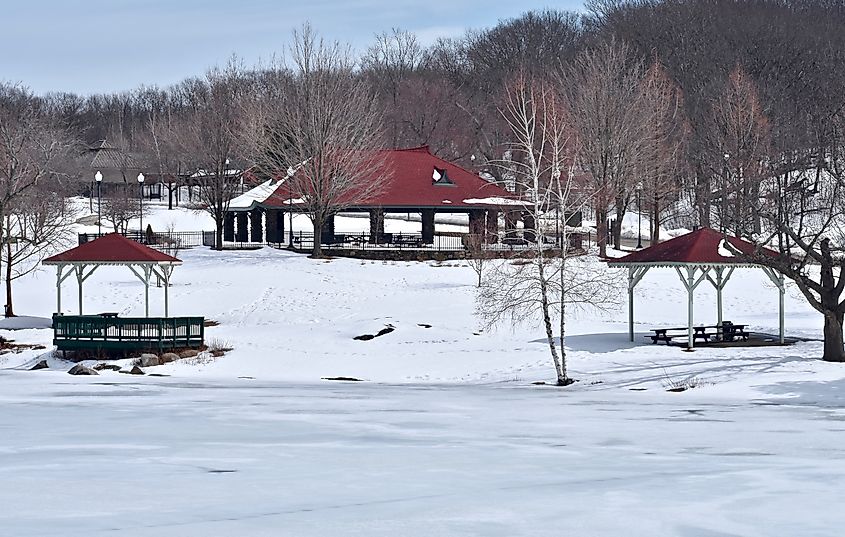
Worcester, Massachusetts, rounds out this list with an average snowfall of 72.9 inches per year. Located in central Massachusetts, Worcester is affected by both coastal and inland weather patterns which bring significant snowfall to the region. The city's winter weather is influenced by “nor'easters,” powerful storms that develop along the East Coast and can drop large amounts of snow on the northeastern states.
While not as snowbound as some of the other cities on this list, Worcester's snowfalls are still notable, particularly during the height of winter.
The Final Word
Together, these cities with the highest average annual snowfall in the United States represent a diverse range of regions. From the Great Lakes to the Rockies and even the desert southwest, each of these areas experiences snow for different reasons. Yet whether it be lake-effect snow, mountain-driven storms, or Pacific moisture, they all share one thing in common: their snowy winter weather.











